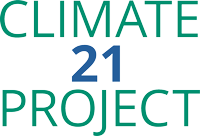Department of Transportation

The transportation sector has become the largest contributor to GHG emissions in the United States. Transportation infrastructure and systems are also increasingly threatened by the impacts of climate change, and will require changes in how we plan, design, and maintain these systems. The public health and economic crises resulting from the COVID-19 pandemic introduce additional challenges and competing priorities. Incoming officials at the Department of Transportation will likely be asked to both address the adverse impacts of the pandemic on public transit ridership and identify the best approaches for new infrastructure investments to stimulate the economy and create jobs. This will create a complicated set of tradeoffs and opportunities. DOT leadership will need to consider how best to allocate management attention and political capital in addressing short-term economic damage from the pandemic and the longer-term, climate-informed changes to how DOT shapes our transportation system.
The Secretary (or senior designee from the Office of the Secretary) should chair an intra-departmental Climate Council that includes senior modal leadership and other key personnel. The Council should drive climate priorities, including incorporating climate considerations into stimulus programs, identifying top priority projects of national significance to elevate for congressional and public attention, and developing guidance encouraging states and localities to innovate on climate-smart, multimodal surface transportation projects. Climate change should be integrated into the organization of each modal administration at a high level, including a climate-focused team within the administrator’s office in each modal administration.
DOT’s authorities and programs provide significant opportunities to reduce emissions and increase resilience to climate impacts, including through vehicle efficiency standards, investments in electric vehicle charging infrastructure, support for transit systems and other low-carbon transportation options, and a "climate in all policies" approach to require consideration of climate impacts of transportation projects. DOT leadership will need to work closely with the White House and EPA to decide how to prioritize and sequence new standards for light-duty passenger vehicles and for medium-and heavy-duty vehicles. DOT can play a lead role in building and installing the charging infrastructure needed to support the electrification of vehicles, including passenger vehicles, local freight delivery vehicles, buses, port equipment, and more. Electrification presents a major opportunity for emissions reduction and could be a cornerstone of efforts to reinvigorate the U.S. economy. DOT should initiate a task force with senior-level engagement to focus on electrification policy, including investment in electric vehicle charging infrastructure along the interstate highway system.
DOT should work to expand partnerships and relationships with state and local government to foster innovation and gather feedback on opportunities for the federal government to support and facilitate subnational leadership. Additionally, DOT should increase staffing within its Office of Public Engagement to bring in climate and environmental justice expertise to help shape and communicate DOT’s priorities.
Lead Authors


